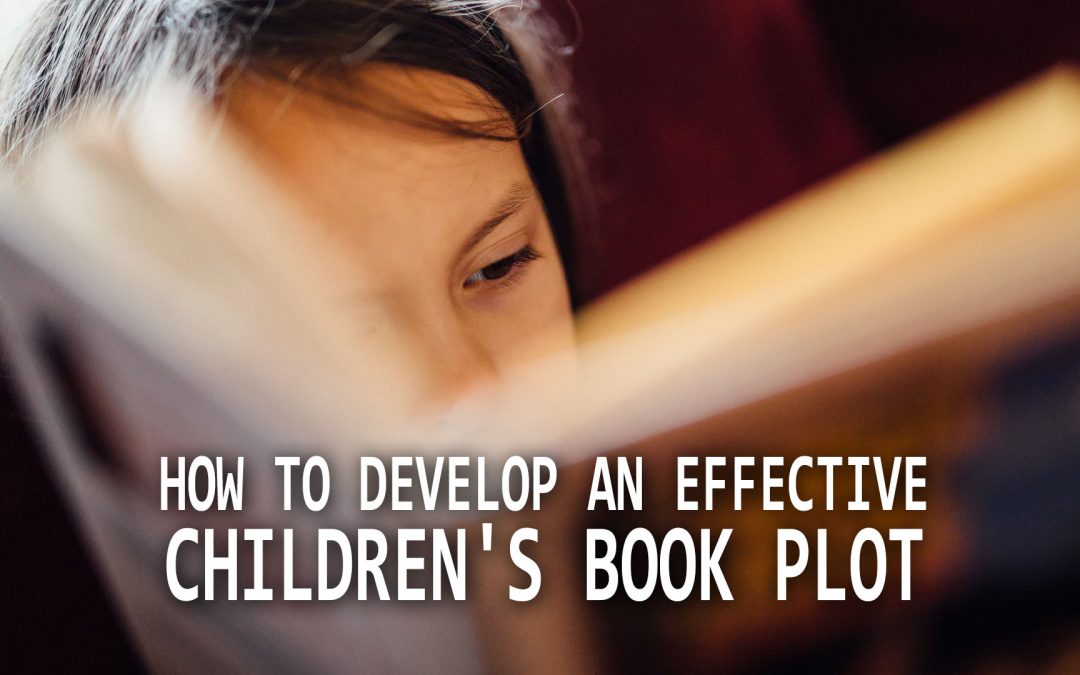How to Develop an Effective Children’s Book Plot
As any children’s book author will attest, writing for children is not easier than writing for adult readers. In fact, it’s probably more difficult. A child’s attention span is so short that there isn’t a minute to spare in capturing and holding their interest. The story must be appealing to the child to have them captivated until the end. And the key to crafting a picture book that holds the kids, parents, and editors alike is to give it a unique plot. Whether you’re writing for children on either the younger or older end of the children’s book spectrum—the plot is the crucial ingredient in a book that a child begs to be read over and over.
The plot is what stories, like Lynda Daniele Children’s book Grandpa Nick’s Bump, move beyond relating a mere incident to sketching a truth or lesson that resonates long after it’s read. Unfortunately, in a children’s book, there is not a lot of space to develop an extremely complex and multilayered plot. The reality is, children’s books give you limited word count to communicate an entire story, with otherworldly, magical, and extremely engaging events unfolding through the page, to the satisfaction of both parent and child. Hence, making the plot something you have to nail immediately.
If you’re considering becoming a children’s book author, this post might interest you. The following tips will teach you to plot your children’s book perfectly.
Know the Market
“Children” isn’t a defined audience. Within that category, you have newborns and toddlers through the early teen years. Children’s books are as rich and diverse as children themselves. So it’s crucial that you know exactly what range of children you are writing for and what kind of books this young audience is hungry for. In general, the categories within children’s books is this:
Board Books (0-3 years) Around none-100 words in total.
Picture Books (3-8 years) Between 250-1,000 words. The current sweet spot is 500 words or less.
Early Reader (5-9 years) Between 1,500-2,000 words.
Chapter Book (6-10 years) Between 8,500-12,000 words.
Middle Grade (8-12 years) 25,000-50,000 words.
Young Adult (12-14 and up) 50,000-75,000 words.
Whatever age level you choose to write for, ensure you understand that market back-to-front to craft a plot that matches their taste. This leads to tip number two:
Learn More by Reading
The best way to know your market and develop the perfect plot is to read more contemporary children’s books. Writing for children’s literature requires knowing how to write in a way children can understand. While keeping it simple and writing unsophisticated sentence structure is good in some way, you need to immerse your young audience. The market is constantly evolving and what was publishable “way back then” is probably not marketable now. Keep your eye on books that recently came out or are coming out this year, notably debut books. When reading, make sure to take notes of characters, structure, language, and twists and turns. Use this knowledge to inform your structure when writing the plot for your own book.
Have an Astounding Idea
The children’s book industry is incredibly competitive, and only the best books stand a chance of getting published. However, that’s okay as long as you have a unique idea that will make an agent stop scrolling and sign you without hesitation. A children’s story ideas can go from being silly, inspiring, hilarious to deep, serious, and straightforward. They can make you laugh, cry, gasp, giggle, and squeal. Ideas like these can come from so many places like a conversation or nature… be an observer, and you’ll find ideas everywhere!
With mountains of books published each year, it might be hard to craft a unique idea. Almost all children’s book authors sum up one idea and another to create a whole new idea. Hence, think of your favorite stories. Your concept needs to be different than piques interest. If a child relates to your idea and sees themselves in it, they’ll want to read it again and again. Nothing else works better in this evolving industry.
Avoid Classic Mistakes All Authors Makes
Pause and look at some common mistakes all authors, new and old, make in plot production.
Writing what you don’t know. Writing about a theme or character with an experience different from your own, you need to ensure extensive research. This especially goes for anything to do with race, gender, and disability.
Starting a story where the character wakes up. The opening scene should immediately grab your reader and pull them into reading further.
Having an adult save the day. Children want to see themselves as having the power to change the world.


Recent Comments